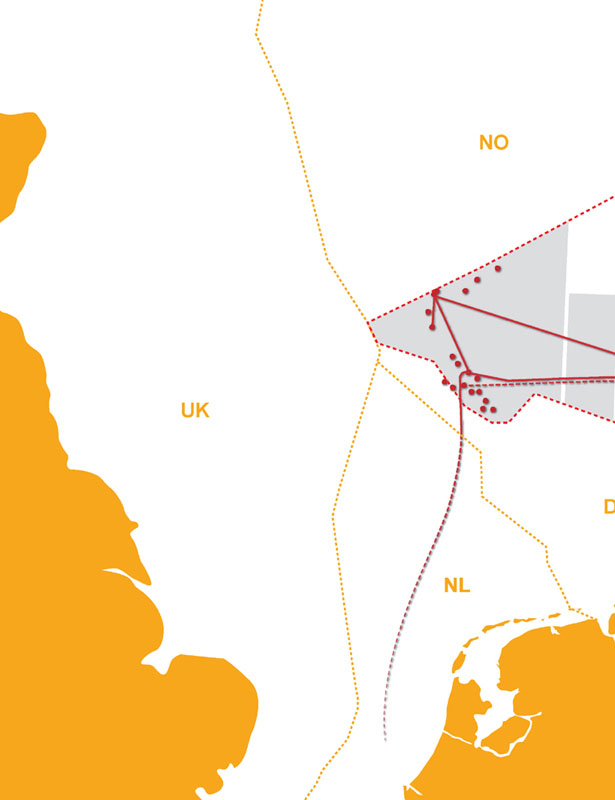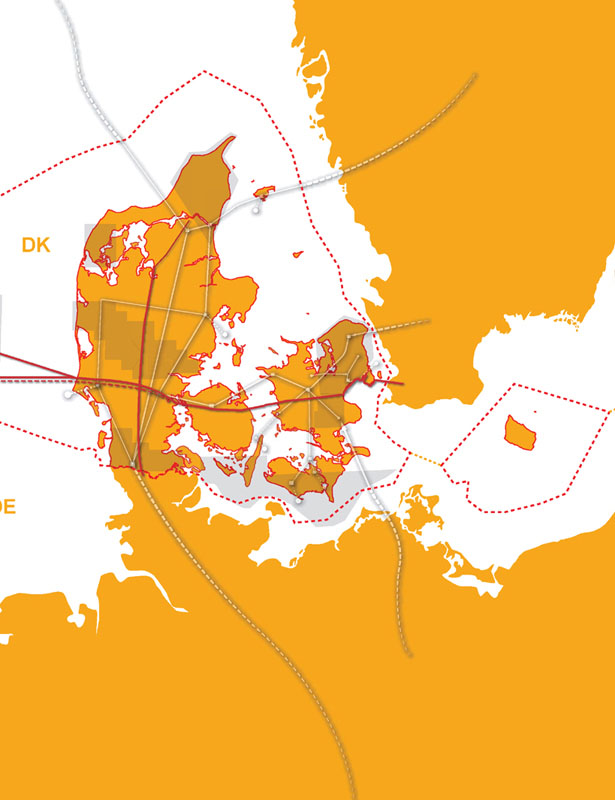Metabolic Landscape.

Global Atlas of Excreta, Wastewater, Sludge, and Biosolids Management Ronald J. LeBlanc, Peter Matthews, Roland P. Richard (editors) ©2008 United Nations Human Settlements Programme (UN-HABITAT)
Imagine the planet as a big brownfield. Consider it less as a virgin resource (to protect) or a sensitive system (to shield), but rather as a big ball of oscillating waste (that keeps moving and circulating), where everything—from the air of the atmosphere to the water of the oceans—has been used, abused, and reused; materials and fluids in different concentrations, whose varying distributions are in constant motion, powered by existing earth processes that are arrested, attenuated, and accelerated by methods of extraction and evolving technologies, adjusted, layered, and thickened by urban change. On this planetary surface, waste is the impetus for improved production, enhanced consumption, and intelligent exchange. Brown is the new green.
If “the shift from one mode [of production] to another,” according to spatial theorist Henri Lefebvre, “must entail the production of a new space,”3 then the transition of industrial systems (closed, isolated, linear systems that produce commodities and wastes) toward urban economies (open, integrated, circular systems that cultivate commodities from wastes) should also produce new spaces, and generate new geographies. If waste is natural and necessary, how then do we design our future?
Looking beyond the residual reclamation of industrial wastes as a catalyst for development, the profiling of emerging waste ecologies and processes of decarbonization trace the contours of contemporary urban geographies beyond cities, outlining a landscape of flows and fluids—from liquids to gases—that they engender and the bodies they shape. Through the characterization of urbanization as a field of flows where materials are like fluids with different concentrations and chemistries, volumes and viscosities, urbanization entails the design of the speeds, cycles, synergies, and synchronicities of these interconnections. As a revisited strategy, the metabolic representation of urbanization may advance the contemporary ecologic subject, whose premise lays in the perpetual circulation of materials, providing a path toward an endless loop of material resources through interactive spaces of exchange, responsive processes of production, regulatory flexibilities, and fluid geographies of cultivation.
The Metabolic Landscape
Or, how a small Nordic nation is conquering the waste-water-energy conundrum
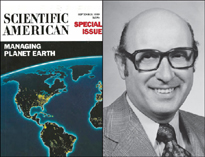
In an 1989 article of Scientific American, Robert Frosch and Nicholas Gallopoulos popularized the term “industrial ecology” from a groundbreaking network of recycling discovered in a small Danish town around the fjord of Kalundborg.4 Turning waste into energy, feeding on groundwater, the ecology of industries that emerged over three decades became an icon of post-modern industrialism recognized universally. Largely overlooked, however, decentralization underlies Danish policies of waste, water, and energy, and how urbanism has transformed its economy5 and ecology.
Decentralizing Denmark
Maersk, LEGO, Novo Nordisk, and Arne Jacobsen are national emblems of Denmark’s economic fame in 1970, when it had the third largest GDP per capita in the world, second only to Sweden and the United States.6 From decades of relentless industrial expansion since World War II, Denmark’s economy overheated in the mid-1970s. With skyrocketing energy prices, depleting landfill space, and contaminated groundwater, a plethora of problems plagued the entire country. From the oil crisis, Denmark developed a national energy policy to decentralize its economy that was largely dependent on oil for electrical power, heat, and mobility.7 In tandem with the creation of the world’s first Ministry of the Environment, the country’s urban–industrial landscape was irreversibly transformed through a litany of legislation and a battery of tax strategies.8 Co-generation plants were set up across the country to turn waste into energy and by the early 1990s, the four largest cities (Copenhagen, Århus, Aalborg, and Odense) were producing power and heat from burning garbage.9
Regional Kommune Structures
Since most Danes live on top of the water they drink, the problem of groundwater depletion and contamination was pressing. With lower underground reserves, the price of water—for urban and industrial consumption—was re-evaluated based on the cost of full recovery instead of market prices. In contrast to centralized systems worldwide, fourteen Danish counties, called Kommunes, govern groundwater according to specific underground aquifer regions. Contamination was addressed with a nationwide groundwater survey. Since 1987, all 400,000 wells have been mapped and are monitored electronically around the clock. Although the average cost of household water supply in Denmark is ten times more expensive than in the US, Danes consume five times less bottled water than Americans, largely because their tap water is safe and tastes great.10
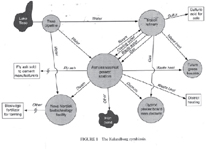
The Kalundborg Prototype
From the energy-waste-water conundrum emerged a network of waste recycling in Kalundborg, west of Copenhagen. In 1976, Novo Nordisk, the world’s largest insulin producer, began diverting 10,000 tons of sludge and surplus yeast from the municipality’s sewage plant to local farms as organic fertilizer. A decade later, the Asnæs Power Station began converting hot wastewater into high-pressure steam for residential heating, as well as fly ash for cement production and waste-gypsum for plasterboard manufacturing. Combined, the two plants produced massive gains from energy cascading, recovering almost 70 percent of the typical loss experienced by large power generators while reducing dependency on foreign fuel imports. The small, sleepy town of 15,000 people also saves about 15 million dollars annually sponsoring renewed urban investment and infrastructural upgrades. Compounded, 600,000 cubic meters of water are saved annually through the cascading and reuse of wastewater effluents.11
Urbanizing Infrastructure
Home to a relatively small homogeneous population of 5.5 million people spread across an area the size of Maine, change in Denmark can happen swiftly. Using energy independence as a national objective, the double bind of economy and ecology is being solved through a diverse portfolio which includes garbage, straw, wood, coal, gas, and wind. Not surprisingly, Danish manufacturers hold half of the world market in windturbine manufacturing while the country has become a net exporter of wind energy.12 Tight controls, precise metering, gradient taxation, and accurate pricing are starting to pay off. Recycling of wastewater and cascading of energy flows is reaching 100 percent for industries and 85 percent for households. More than an isolated case of waste recycling, the Kalundborg prototype proves durable as a test bed for the limitless capacity of waste and energy synergies when factoring the primacy and longevity of groundwater resources.
Referencing a historic discourse initiated by Abel Wolman’s 1965 “The Metabolism of Cities,” this text serves as a rethinking of urban sustainability that integrates urban flows and urban patterns across a broad range of different political dynamics and material geographies. From self-heated cities to cycling industries, the regional decentralization of Denmark’s economic system makes the case for renewing the discourse on the landscape of Western industrial infrastructure and the roles that waste, water, and energy play in patterns of urbanization.
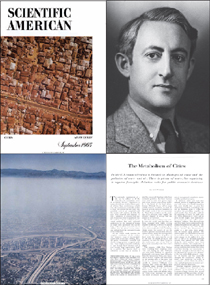
WATER, WASTE, AND WARS
On January 21, 1968, at the height of the Cold War, a B-52 bomber carrying four thermonuclear warheads crashed seven miles off the coast of Greenland in territorial waters of the Baffin Sea belonging to the Kingdom of Denmark. Triggering an era largely opposed to nuclear power, several nuclear accidents—including Three Mile Island in 1979, Chernobyl in 1986, and Barsebäck in 1992—foreshadowed imminent dangers of radiation fallout at a time of heightened environmental awareness across the globe. An Emergency Preparedness Plan in the Event of Radioactive Fallout was the first national program rolled out across Denmark in 1970 by what is recognized today as the first-ever Ministry of the Environment in the world.13 Reactorfree as a result of the 1981 Nuclear Referendum, Denmark has since experienced ground-breaking transformation of its infrastructure, both economically and ecologically. Underlying this change is the synchronized management of energy, waste, and water systems that is largely preconditioned by its size, its resources, and its urbanization. Chronicling a series of largely overlooked events and conditions during the past years, this brief article revisits the build-up of Denmark’s regional infrastructure and how the persistent decentralization of its landscape underpins this change.
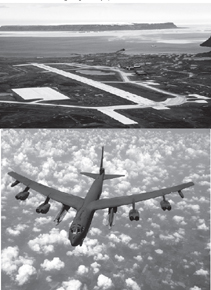
As Denmark adopted the Nordic Model Welfare State in 1970, the World Bank announced that its smallest European country reached the third largest GDP per capita in the world, second to Sweden and the United States.
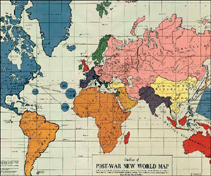
Denmark’s prominent wealth was made visible internationally by Danish giants such as global shipping broker Maersk, universal toy producer LEGO, and modern architectural genius Arne Jacobsen.14 As the island of Vikings enjoyed the returns of postwar industrialization, its prosperity was overheating, and soon after challenged when petrol shortages hit the country in 1973 as a result of the Arab oil embargo.15
For several years, fuel supplies were rationed and food prices spiked. From November 25, 1973, to February 10, 1974, Sunday driving was banned altogether. The crisis re-ignited in 1979 with skyrocketing oil prices after the declaration of Iran as an independent Islamic republic. Almost entirely reliant on oil in the 1970s as the single source for its power for both heating and transportation, the Arab oil embargo affected every sector of Denmark’s post-war industrial economy.

Fuels and Materials
Scarcity bred ingenuity. By the late 1970s, Danes were seasoned to energy shortages for more than a century. Decades of scarcity—from fuel to space to water—were marking decisive shifts in the country’s ability for wholesale change. During World War II for example, Nazi occupation of Denmark cut off international supplies. The short 68-kilometer border entirely controlled by the German troops turned peninsular Denmark into an island. For almost five years, the entire population encountered a shortage of almost all imported goods.16 Fuel and rubber were the hardest hit. Short on any major reserves of fossil fuels, Denmark reenlisted two materials—lignite and peat—as substitutes for factory and household heating, while coal-fired gasworks provided, albeit intermittent, electric power. Despite their lower burning temperatures and faster combustion rates, both materials were available regionally and more importantly they were replenishable. Short on fuel, blocks of beechwood were burned to power ad-hoc generators mounted on specially modified transport trucks.
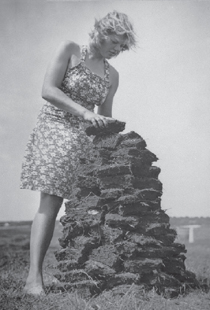
The few private vehicles that could afford to travel were busy negotiating congested streets of bicycles, the only affordable system of personal mobility available during the war. Everything had value; everything was self-powered. It was even outlawed to dump feces and excrement of any kind in the sea, since precious fertilizer for countryside farms was
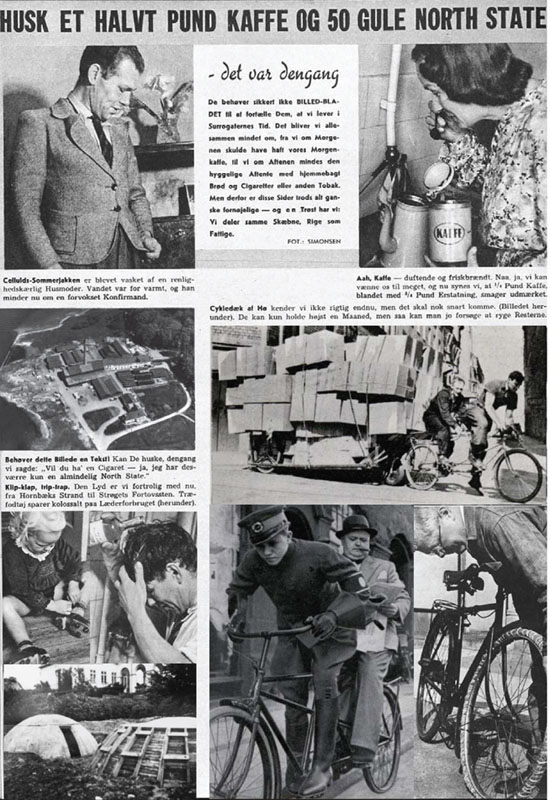
Source: Billed-Bladet No.36 D.9, September 1941–45
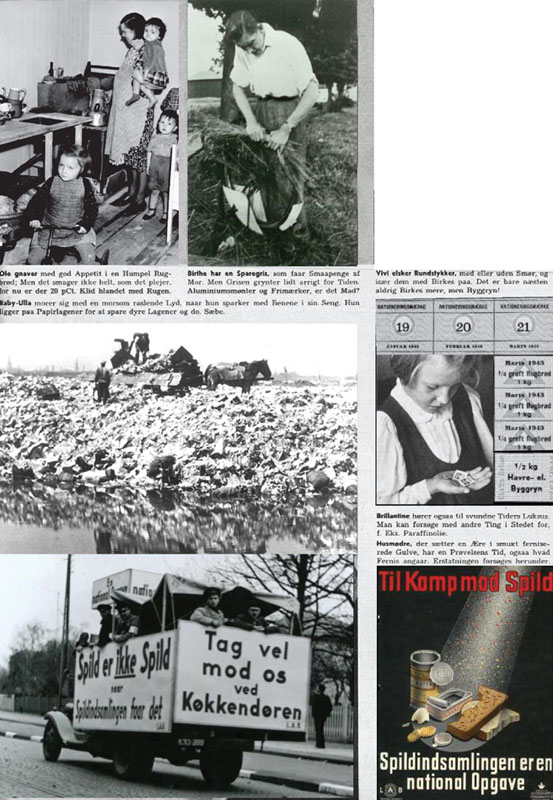
Scarcity Breeds Ingenuity
Public propaganda pamphlet distributed by the Department of Labor explaining substitutes and techniques for countering the widespread shortage of materials, fuels, and jobs with scrap recycling, regional fuels, water conservation, food rationing, and bicycle transportation during wartime. A “Waste is Not Waste” campaign is developed by the Danish National Association for Combating Unemployment (LAB, Landsforeningen til Arbejdsløshedens Bekæmpelse) during World War II to create an industry and economy of trash materials. desperately needed for constant food production. The lack of diesel oil equally made it difficult to maintain heat supply during five cold Nordic winters from 1940 to 1945, forcing plant owners to establish back-up heating systems. Instead of individual heating units, resources were pooled and solid fuel boilers were established for district heating systems across the country.17 To extend existing fuel supplies, the first standardized bottle-return systems in the world were put into place between 1904 and 1920 by Carlsberg breweries, saving considerable energy and raw materials.18 With oil reserves eventually running dry, the use of refuse as a fuel became the natural panacea. By the turn of the century, this was nothing new. By 1903, the waste-to-heat conversion process was in fact, already in place. Just outside of Copenhagen, the first combined heat-and-power plant—early precursor to contemporary cogeneration systems—began receiving its first garbage loads as solid fuel at the Frederiksberg incinerator, the first of its kind in the country.19
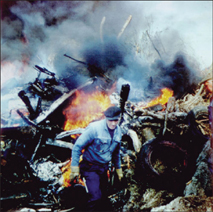
Dumps and Fires
While oil prices were skyrocketing in the mid-1970s, Denmark was also running out of landfilling space. Greatly reducing overall volumes, burning garbage was as widespread as it was imperative. The increasing shortage of landfill space was further exacerbated from the restructuring of the national waste administration. Compounding a critical situation, alarming concerns were raised over regional groundwater quality and looming threats of environmental hazard from unchecked waste management and agricultural runoff. In a nationwide hydrogeological study in 1987, more than 1,500 landfills and buburied waste repositories were scrutinized by the Danish EPA. Coupled with pesticides from large agricultural operations, plumes of leachate were dangerously spreading underground from unlined landfills. At the Grindsted and Vejen Landfills—the Love Canals of Denmark—drinking water was in considerable risk of contamination from heavy metals and hydrocarbons in leachate. The millenniumold practice of landfilling and open pit burning in Denmark reached an impasse.20
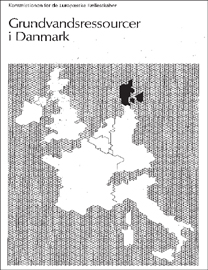
Surface and Subsurface Waters
Groundwater depletion exacerbated the landfill imbalance. Used for industrial cooling, cleaning, and irrigation, groundwater was rapidly dropping. From the post-war boom in the 1950s to the 1970s, water extraction from mass-industrialization and mass-agriculture was occurring at an unchecked pace. Excess abstraction also stemmed from mass-urbanization. In the early 1980s, the Danish EPA found that the three largest cities (Copenhagen, Århus and Odense) were all withdrawing three times more groundwater than could be replenished. By the end of the 1980s, groundwater was under visible threat of leachate contamination originating from centralized landfills, excess extraction, and chemical effluents across the entire country.21
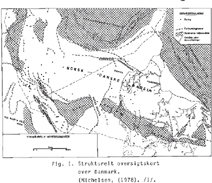
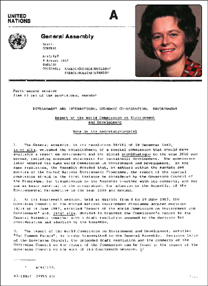
Brundtland’s Problétique
From an economic perspective, Denmark’s sluggish economy simply compounded the country’s infrastructural challenges. Rising unemployment, plummeting exports, and rising inflation plagued a country that was facing an emerging trade bloc from the European Commission. By the early 1980s, Denmark was in deep trouble. Europe’s smallest nation was in a double bind: how to ensure the longevity of its groundwater resources and solve its growing waste problem, while expanding its industrial output to increase global competitiveness—all this, while becoming energy independent.
STRATEGIES, SYNERGIES, AND SYNCHRONICITIES
During the 1970s and 1980s, a litany of legislation was tabled, irreversibly changing the course of the country’s urban–industrial landscape: the creation of the world’s first Ministry of Environment in 1971 (ironically at the precise moment that Copenhagen’s Christiania district declared itself a free state within Denmark), a National Energy Policy in 1976, the Chemical Waste Deposit Act in 1983, the Brundtland Report in 1987 dubbed “Our Common Future,” and the Environmental Protection Act in 1992.22 Regional decentralization—not liberalization—of its national infrastructure became de rigueur. Unlike bureaucratic policies, these measures were designed as preemptive strategies and based on three simple, longterm principles: the replenishment of groundwater resources, the reduction of waste generation, and the development of energy independence. With a small, relatively homogeneous population that was rapidly urbanizing, Denmark’s culture of compliance was an asset, allowing change to roll out quickly. So, reformulating the energy-waste-water conundrum relied on three basic imperatives: quantifying water reserves, reordering waste streams, and rechanneling energy sources.23
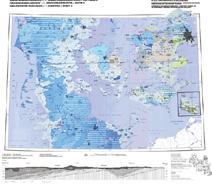
Metrics and Minimization
Surveying the entire country’s groundwater resources was the first measure. Since Danes live on top of the water they drink, solving the ecology–economy juggernaut was critical and complex. Unlike most countries in the developed world, the 5.5 million people who inhabit a country the size of Maine or South Carolina, draw 99.7 percent of their drinking water directly from the ground. The Danish water system is entirely decentralized, with more than 3,000 waterworks and 400,000 wells (70,000 of which supply less than 10 households) that draw groundwater aquifers 20–200 meters below the surface. When the Danish EPA—prodigy of the Ministry of the Environment—undertook its nationwide groundwater survey in 1987, it provided real-time electronic information for all 325,000 groundwater wells throughout the country that to this day is publicly accessible online, any time.24
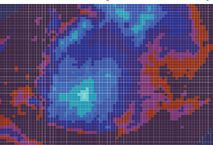
Dating back to the world’s first Water Supply Act in 1926, this decentralized structure presents several advantages: it contributes to good groundwater and drinking water quality across the country, and it allows consumers to keep an eye on the quality and to identify possible solutions to pollution threats. As a result of the tight controls and precise metering of groundwater supplies, the price of water in Denmark is based on the principle of full cost recovery as opposed to arbitrary market pricing, an unquestioned standard throughout the world. Notoriously high prices and high taxes eventually pay off. Although the average cost of household water supply in Denmark is considerably more than in the US ($3.50 vs. $0.35 per cubic meter) according to the World Water Federation, Danes consume five times less bottled water than the global average (22 liters vs. an average of 65 liters in the US) largely from the pure, great tasting, tap water.25

Cycling and Banking
To solve the landfill airspace snag, the second measure involved the reduction of waste through source separation and the optimization of recycling networks. A new, effective order was established. First, reuse what is recyclable. Second, burn what is combustible. Third and last, landfill the rest, as close as possible to the point of origin. But there is little or no centralized curbside recycling to speak of in comparison to the American model. Instead, individuals drop off used goods to material depots or recycling banks. Reducing the volume by more than 90 percent, landfills could now be reserved for non-toxic nonrecyclable residues which could not be burned. With the Waste Deposit Act in 1983, the waste industry was entirely restructured: national legislation was deregulated and municipalities now had to deal with their own waste streams and ensure their own landfill capacity. To divert waste away from valuable and expensive landfills, taxing of waste became necessary to create a market for waste recycling. The late 1980s and 1990s became an unprecedented era for environmental taxation and ecological tax reform in Denmark. Pricing and taxation became a major strategic instrument. Stemming from the contentious albeit successful introduction of the 180 percent car tax in the 1970s, new, graduated tax systems on CFC, waste, and packaging were introduced a decade later. Recycling suddenly became more profitable than landfillling, ranking higher in the waste echelon (landfilling costs 5 to 10 times per ton more than in the US).26 According to Dansk Retursystem, bottle recyclers in central Copenhagen today, can earn a higher living wage than welfare recipients in North America.
Pooling and Backfilling
Hazardous materials operate on the same principle. Accounting for less than 1 percent of the total waste generated, hazmats are transported to a central waste facility, the Kommunekemi in Nyborg. It is the first and only treatment plant of its kind built in 1971 by order of the Danish EPA. Organic chemicals, solvents, and oils are separated and burned in high-temperature incinerators; waste heat and emissions are recaptured, then reconverted into steam by a district heating plant.27 Generated steam is then re-distributed to 4,500 neighboring homes. Remaining hazardous waste is either exported as neutralizer for highly acidic landfills in western Norway or as backfill material for underground salt mines in northern Germany.28
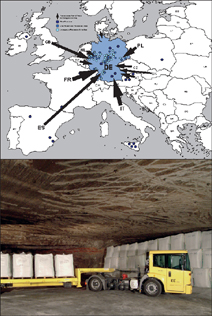
Fjord Urbanism
Aerial view of the Kalundborg fjord and the classic spatial distribution of farm fields, industrial areas, and small urban areas. Nestled in this small embayment are some of the country’s largest manufacturers, plants, and refineries, including Novozymes (biotech), Asnæs (the country’s largest power plant), and Statoil (the country’s biggest refinery) that set up shop in Kalundborg during the 1960s and 1970s due to the excellent ocean access to the Baltic Sea, short trucking distance to the nation’s capital, cheap commercial-grade land, and abundance of fresh water for manufacturing. Due to stringent air, land, and water emissions restrictions, lands adjacent to heavy industry and power generation can be used for recreational and agricultural uses.
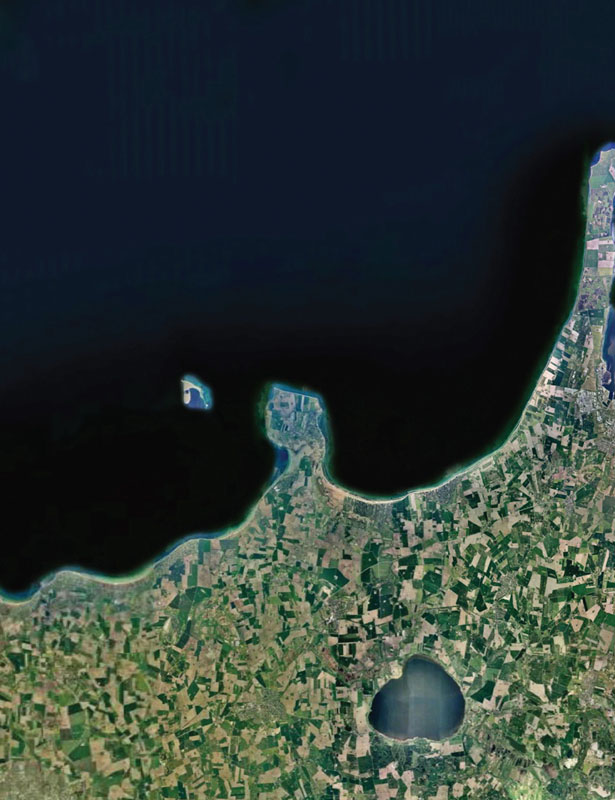
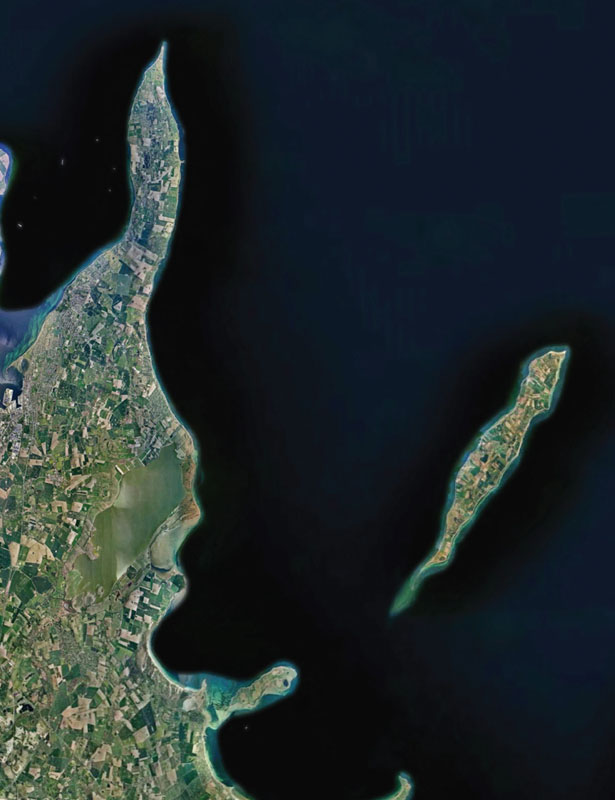
Source: Google Earth - Digital Globe, 2008
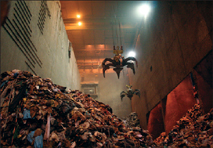
Condensing and Cascading
Closing the loop on waste production enabled the third measure to achieve energy independence. Energy cycling and diversification was the base. Denmark set the stage in 1992 when it became the first country to adopt explicit CO2 taxes on both household and business energy consumption. Energy suddenly became much more expensive but also more valuable.29 Danes are renowned for exorbitant electricity bills. Coming to the rescue, a loophole provided an alternative: since garbage is exempt from taxation when used as a solid fuel (it becomes almost CO2 neutral), why not burn it to produce steam and power?30
REGIONAL ECOLOGIES AND ECONOMIC EFFECTS
The century-old practice of turning crud into candlepower was legitimized on January 1, 1997 onward when Denmark became the first country in the world to ban the landfilling of incinerable waste. Breaking new ground on combined heat-and-power production, biofuels (straw bale, sludge, wood chips) now took precedence over fossil-fuel fuels (coal, oil, natural gas) for combined heat-and-power production. Its waste-to-energy policy, adopting EU landfill directives in 1999, was straightforward: it already surpassed European standards by avoiding the problem of landfilling altogether. Coupled with sophisticated emissions recovery systems, the waste incineration option posed a much lesser threat to the groundwater.
Energy diversification entailed the birth of new power plants. From the 1976 National Energy Policy emerged a plan by the Danish Ministry of Trade and Industry to establish a number of power-generating stations throughout the country to ensure a steady supply system, in independent from imported oil and its derivatives, while rolling out known optimization techniques of waste recycling and energy cascading.31
Fluids and Gases
Supplying one-third of the nation’s electricity, the Asnæs Power Plant was one of the first coal-fired power plants retrofitted and expanded to address the new waste-water-energy agenda. Located eighty kilometers west of Copenhagen, the 1000-MW facility is also one of the biggest. Putting out close to 6 terawatt hours of electrical power for the population of Zealand, including inhabitants as far away as Copenhagen, the plant also produces more than 500 megajoules per second of waste heat in the form of steam, generated by the water cooling of power generators. In the 1960s into the 1970s, it relied on seawater and groundwater in the fjord of Kalundborg, and more recently on surface water from Lake Tissø, some 34 kilometers away, as an industrial coolant supply. In response to national groundwater concerns in the mid-1980s, the power plant began using large quantities of waste water from nearby Statoil Refinery in order to cool down its towers.
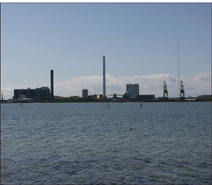

Less than a decade later, the power plant began converting waste-water into high-pressure steam and sold back to the refinery for heating requirements. Capitalizing on an existing pipeline network, excess steam was then piped to nearly 5000 homes in residential neighborhoods spread out across Kalundborg,32 a small town recognized for being Denmark’s deepest harbor. Its intermodal infrastructure (sophisticated bulk cargo shipping, extensive stevedoring, trucking logistics and brokers) provides excellent access to the Baltic Sea for industrial companies and its fast ferry service to Århus and Samsø makes Kalundborg an internationally significant industrial node. Coupled with abundant groundwater and affordable land within the vicinity of Copenhagen, Kalundborg has become a privileged location for the establishment of biotech companies located one hour from Copenhagen.
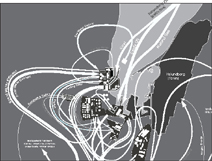
Solids & Aggregates
Once headquartered in Copenhagen, the Novo Group set up shop there in 1968 for the above reasons. Due to the large quantity of waste liquids generated in enzyme production by its child company Novozymes, the broth of microorganisms, potato starch, and sugar is dewatered and reprocessed into 250,000 cubic meters of dry and liquid biomass, redistributed annually to 600 local farmers as organic fertilizer on fields. As a result of the triple bottom line, Novo reduces reliance on commercial pesticides and diverts sludge from waste treatment. With transformative legislation, additional waste products from the Asnæs power plant, such as waste gypsum, is reused for plaster-board manufacturing at nearby Gyproc, fly ash for concrete production at Unicon, and bottom ash for road construction in the region, due to its naturally low aggregate availability. Even the local BMX track is built with dewatered sludge from the local wastewater treatment plant. Organic sludge from the local waste water treatment plant is now diverted to the nearby RGS90 soil remediation facility (one of the world’s most sophisticated soil remediation facilities) for bio-piling and conversion into sandblasting materials for building restoration. Geo-remediated sludge is also diverted to a local fish farmer as fertilizer, at the base of the Asnæs power plant.
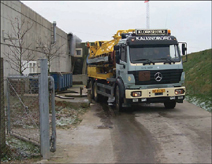
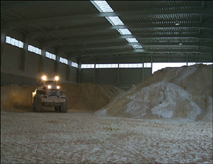
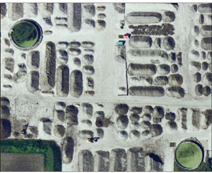
Biologicals and Biofuels
During the past thirty years, this network has effectively resulted in measurable effects and spin-offs: more than 50 percent of industrial waste has been diverted from regional landfills and treatment plants; urban energy demands have been reduced by 25 percent; and regional dependency on foreign material imports has substantially decreased; and there has been a net reduction of 3 million liters of freshwater use and replenishment of groundwater supplies. In total, 15 million euros are saved every year, totaling more than 80 million over the past few years. With its tight industrial waste recycling network and new land use synergies, Kalundborg is recognized as the first prototype of industrial networks worldwide.
With droves of visiting consultants and academics every year, the small town is ironically better known for the contemporary landscape of emerging industrial synergies than for the twelfth-century architecture of the Vor Frue Kirke cathedral it has maintained for eight hundred years. Today, the industrial systems implemented throughout the country also explain the prominence of Danish manufacturing companies on the world stage today. Denmark’s dynamic duo, Novozymes, the world’s largest producer of industrial enzymes located in Kalundborg, and Vestas, the leading wind-turbine producer in the world whose facilities dot almost every medium-sized town across the entire country from Lem to Ringkøbing. Pioneers in their respective fields of renewable resources, both companies are currently listed on stock exchanges worlwide.
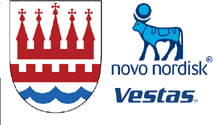
Ecology of Scale
The prototypical waste-water-energy strategy has proven to be scalable. The largest of the power plants in Denmark is the Avedøre power plant, which runs on a cocktail of different fuels, including coal, natural gas, and oil, but is largely fueled by renewable biomass including straw bale and waste wood. Combined with heat generated from refuse incineration plants, waste steam now supplies 97 percent of the city’s heating supply needs. Waste steam from the plant is combined with waste heat to keep 1.2 million houses in Greater Copenhagen warm during the winter.33
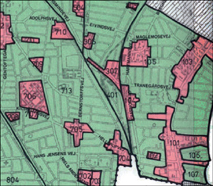
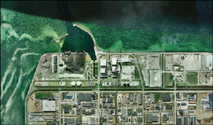
Living on Landfills
From a landmark agreement between five city mayors dating back to 1984, waste steam from electricity production that was traditionally released in the harbor is now recaptured and channeled back 1,300 kilometers through pipelines directly into homes across the city and its surrounding suburbs. In one large pool-operated system, a total of four combined heat-and-power plants, four waste incinerators, and more than fifty peakload boiler plants with more than twenty distribution companies, total heat generation capacity from waste hovers around 30,000 terajoules. According to the Danish Energy Authority, the system shaves 1,400 Euros off from annual household bills, roughly translating into a bulk savings for the city of 200,000 tons of oil every year. Today, Copenhagen is the only city in the world to be almost entirely heated from the waste it generates.34
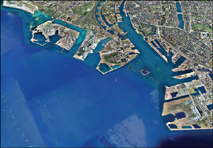
With the projected relocation of the central harbor to the reclaimed lands of Nordhavn, Copenhagen is planning for future growth while synchronizing its development. Two hundred hectares will be reclaimed from the Øresund, with 46 million cubic meters of materials excavated from the construction of the new city metro line and topped off with recycled demolition debris. Heralded as the Paris of Scandinavia, Copenhagen in the future will look more today like a carefully crafted landfill than a pristinely preserved city. Decentralization in the future, both as a strategy of urban decongestion and ecological reclamation, therefore seems necessary and inevitable.35
Protoecology
Proportional flows of waste materials and feedback loops of energy between different urban and industrial sites in Kalundborg, Denmark. Major flows originate from the Asnæs Power Station, the Statoil Refinery, and Novozymes, the world’s largest producer of industrial enzymes. The diagram reveals the regional landscape that underlies the cycling and cascading system that is largely left out of traditional research on Kalundborg’s industrial ecology. Diagram: OPSYS
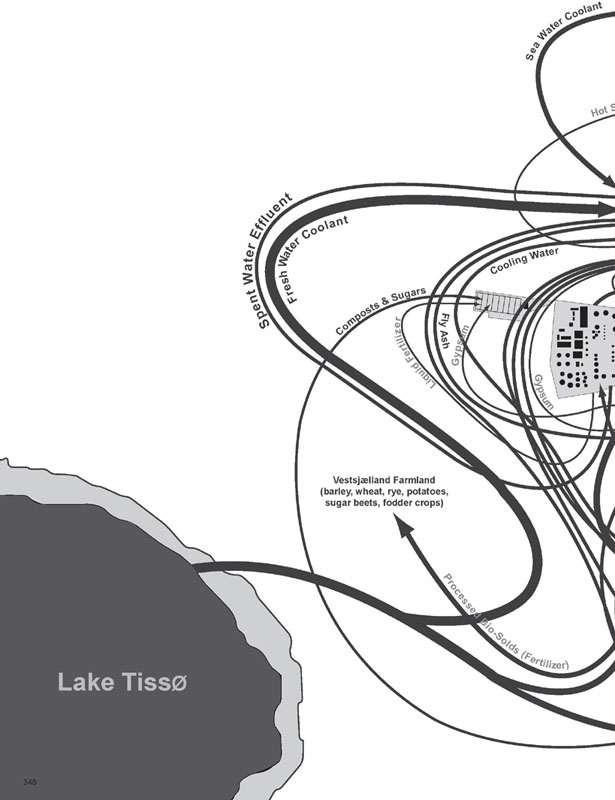

Fluid Urbanism (Field Work)
Landscape of pipelines, designated corridors, and distribution right-of-ways around the Kalundborg ford, where waste steam from the main power plant is redistributed to heat local plants and nearby residential homes. Due to stringent air, land, and water emissions, lands adjacent to heavy industry and power generation can be used for public and agricultural uses. Conservation of resources is less of a matter of preservation or protection as it is about conversion and continuous flow.
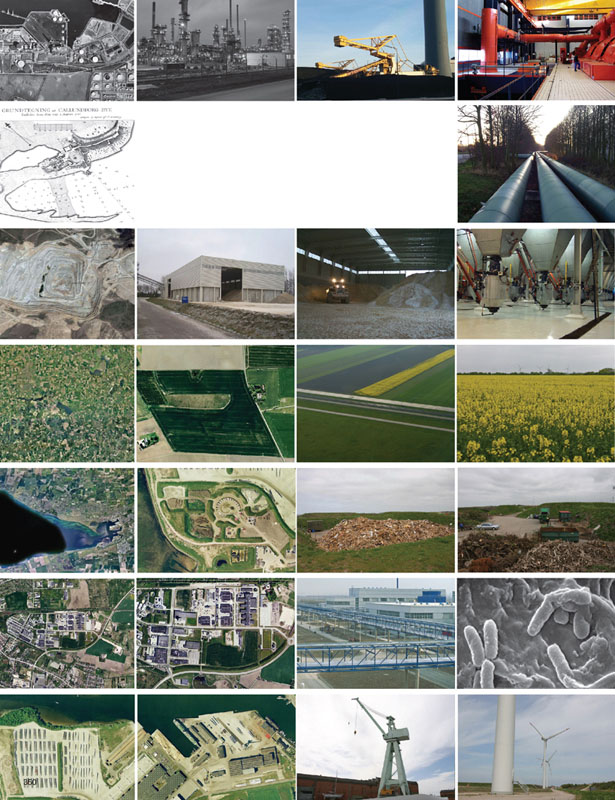
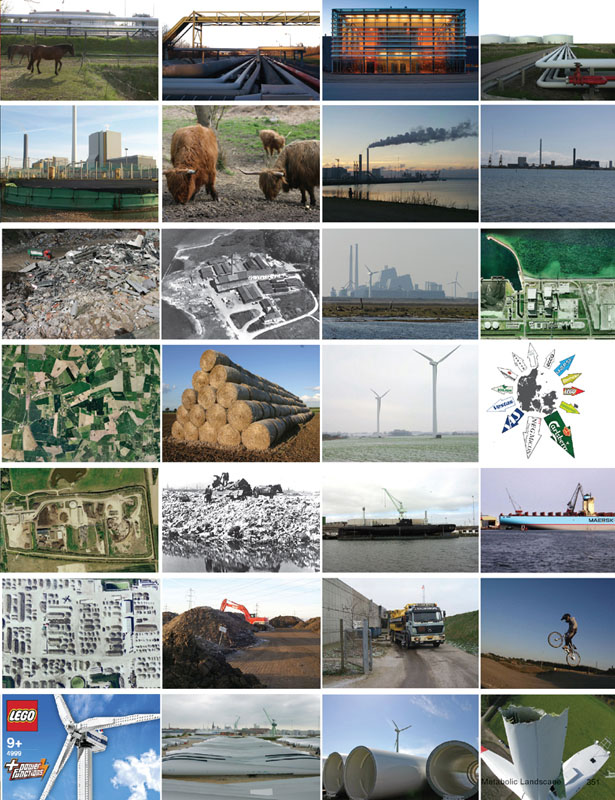
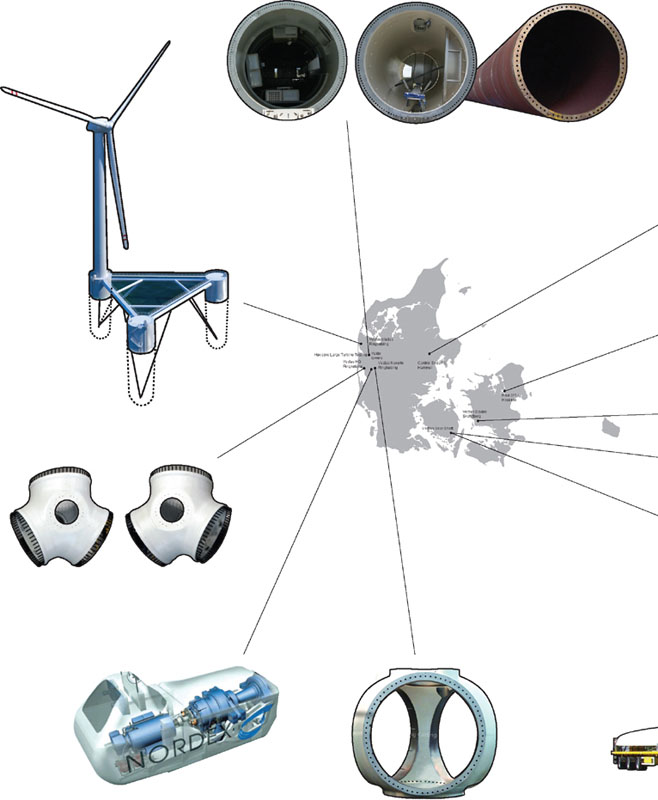
Distributed Design
and Regional Engineering
The 44-meter, fiberglass blade from a Vestas V90
3-megawatt wind turbine fabricated and stored
on the site of a former landfill used for coastal
dredge disposal in Nakskov, Denmark. Once the
John Deere of Denmark, the small engine manufacturer
and agricultural equipment supplier from
the small town of Lem in western Denmark is now
the leading manufacturer and erecter of wind
turbines in the world, thanks to partnerships with
energy giant NEG Micons. Once named Vestjysk
Stålteknik A/S in 1928, the structure of the Vestas
company is entirely decentralized: towers are built
in Nyborg; blades are made in Nakskov, Lem, and
Skjern. Control systems are built in while research
and development is funded at the RISØ Laboratory
in Røskilde. Diagram: OPSYS
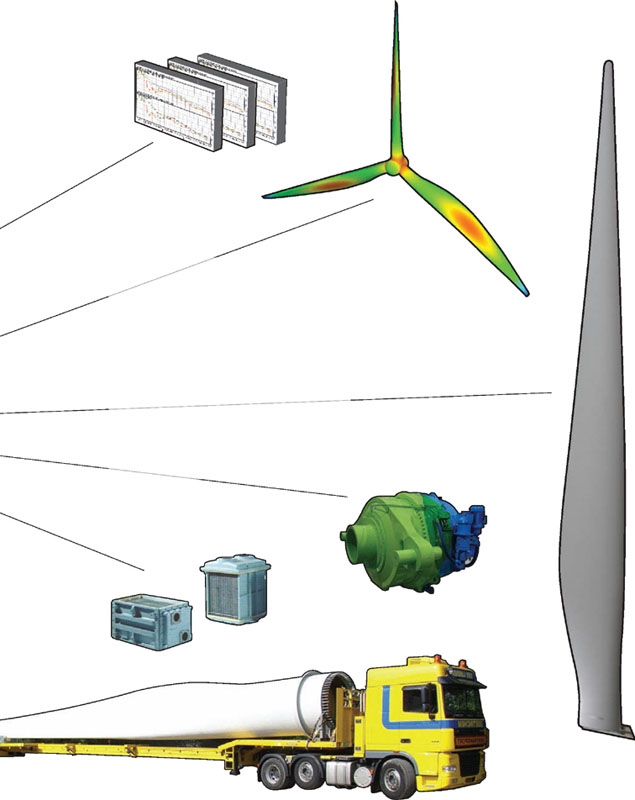
Recovery and Recirculation
Current statistics are promising. Today, Denmark recycles 100 percent of the steel slag, bottom ash, fly ash, asphalt and practically all of its concrete from industrial, construction and demolition processes. Thanks to the non-profit bottle return agency, Dansk Retursystem, it has a 100% return rate on its reusable glass bottles, with an average thirty-three reuses.36 As of 2002, the thirty-one Danish incineration plants treat almost 3 million tons of waste annually, corresponding to around 600 kilograms per capita, third only to Switzerland and Japan for incinerating the most waste per capita. Reciprocally, there has been a sharp drop in the demand for more landfill airspace from the existing 134 landfills across the country.
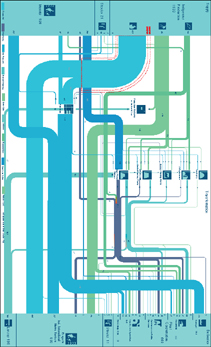
Decentralizing Denmark
With the national Energy Plan in 1976, the country’s energy mix is now the most diverse in the world: it relies on 20 percent coal-fired power plants for electricity, and almost entirely on waste to energy plants through combined power systems for its heat. Renewables, in the form of wind and biomass, are the largest power provider. Thanks to leastcost zoning, the largest percentage comes from the burning of waste. Unlike most of its European Union neighbors, there are no nuclear power plants in Denmark. Wind now supplies 21 percent of their energy supplemented by a circle of energy co-dependency with its neighbors, including Norway, Sweden, and Germany.37
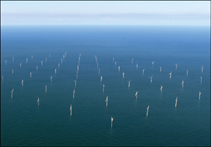
Opportunistically, Denmark sells wind power during peaks, and buys hydropower during lulls. From this, it has become a net exporter of wind energy. Spin-offs from the wind industry alone amount to 20,000 jobs for a country with half the population of the State of Maine. And now the government is putting up $1 billion to develop and integrate solar, tidal, and fuel-cell technology.38
Not surprisingly, Danish wind-turbine companies hold a solid share in half the world market, generating 3 billion euros out of a world total of 6 billion.39 More than just a series of isolated experiments in urban recycling or industrial ecology, the entire landscape of Denmark—both on land and offshore—is proving durable as a test bed for the limitless capacity of waste synergies and energy synchronicities latent in the recirculation of by-products and rechanneling of heat sources. From the construction of the first military forts using waste materials during the Middle Ages to the conversion of sludge into fertilizers in the twentieth century to the generation of power from garbage in 2008, the ecology of waste—the irreversible by-product of industrial and urban operations—appears to be one of the most sustainable economies in the history of the Old World. In other words, shit, the excreta of urbanization, is the new fuel, food, and feedstock.
Originally presented at the Ecological Urbanism Conference chaired by Mohsen Mostafavi in March 2008 at the Harvard Graduate School of Design.
Notes
This text is not a history of the concept of metabolism, nor is it a history of the case of Kalundborg. Instead, it is an application of the historical concept of metabolism to Kalundborg, in order to urbanize the concept through the notion of a “metabolic landscape” and propose a discussion that moves us from speaking exclusively about “industrial ecology” toward the more encompassing and integrative notion of “urban ecology.”
1. Abel Wolman, “The Metabolism of Cities,” Scientific American 213, Special Issue “Cities” (September 1965): 179. The contemporary relevance of Wolman’s view on metabolism is outlined in In the Nature of Cities: Urban Political Ecology and the Politics of Urban Metabolism, ed. Nik Heynen, Maria Kaika, and Erik Swyngedouw (New York, NY: Routledge, 2005). The edited contents include important contributions by Matthew Gandy, Neil Smith, Stephen Graham, and Roger Keil, to name a few.
2. Ivan Illich, H2O and the Waters of Forgetfulness (London: Marion Boyars, 1986): 40.
3. Henri Lefebvre, The Production of Space, trans. by Donald Nicholson- Smith, 1991 (Paris, FR: Éditions Anthropos, 1974/1984): 46.
4. In their 1989 article, Frosch and Gallopoulos proposed that “the traditional model of industrial activity in which individual manufacturing processes take in raw materials and generate products to be sold plus waste to be disposed of, should be transformed into a more integrated model: an industrial ecosystem. In such a system the consumption of energy and materials is optimized, waste generation is minimized and the effluents of one process whether they are spent catalysts from petroleum refining, fly and bottom ash from electric-power generation or discarded plastic containers from consumer products, serve as the raw material for another process.” See Robert A. Frosch and Nicholas E. Gallopoulos, “Strategies for Manufacturing,” Scientific American 261 No.3 (September 1989): 94. Although the original title of the article—“Manufacturing: The Industrial Ecosystem View”—did not feature their notion of industrial ecology as they intended, Paul Hawken was one of the first authors to make a direct connection in the early 1990s between the emerging notion of industrial ecology and industrial ecosystem that they presented in their 1989 article, with the Kalundborg network of waste recycling and material symbiosis that was well under development in the 1970s. In it, he states that “for the first time, industry is going beyond life-cycle analysis methodology and applying the concept of an ecosystem, to the whole of an industrial operation, linking the metabolism of one company with that of others. The prototype of industrial ecology and cooperation is Kalundborg, Denmark.” See Paul Hawken’s chapter “Parking Lots and Potato Heads” in The Ecology of Commerce: A Declaration of Sustainability (New York, NY: Harper Collins Publishers, 1993): 73.
5. Jerzy Regulski, Decentralization and Local Government: A Danish-Polish Comparative Study in Political System (Roskilde, DK: Roskilde University Press, 1988). Regulski makes several important distinctions between the sociopolitical dimensions of regulatory decentralization and the territorial dynamics of spatial deconcentration. See also “Strategies for Decentralization and Local Government Autonomy—An Assessment of a Danish Initiative” by David Etherington, Public Money & Management 16 No.1 (1996): 45–50.
6. Caspar Jørgensen and Morten Pedersen, eds., Modernism And Rationalization (Aalborg, DK: Museum of Northern Jutland and The Heritage Agency of Denmark, 2006).
7. Ingrid Henriksen, “An Economic History of Denmark,” Economic History Association Encyclopedia, ed. Robert Whaples (October 6, 2006), http://eh.net/encyclopedia/article/henriksen.denmark.
8. Ellen Margrethe Basse and Erik Werlauff, Environmental Law in Denmark (New York, NY: Kluwer Law International, 2000).
9. Babcock Heron Kleis, Wilcox Vølund, and Rambøll Søren Dalager, 100 Years of Waste Incineration in Denmark: From Refuse Destruction Plants to Hightechnology Energy Works (Esbjerg, DK: Babcock & Wilcox Vølund ApS, 2004).
10. Berit Hasler et al., “Economic Assessment of the Value of Drinking Water Management in Denmark by Groundwater Protection and Purification of Polluted Groundwater” (Discussion paper for the Seminar on Environmental Services and Financing for the Protection and Sustainable Use of Ecosystems, Geneva, October 10- 11, 2005); GEUS – Geological Survey of Denmark and Greenland, Annual Report, 2001. As the major contributor to groundwater pollution, the flow of nitrogen and nitrates from agriculture runoff is under severe restriction and policy; see “Implementation of the Nitrates Directive in Denmark” by the Danish Ministry of The Environment – Environmental Protection Agency (2011), www.mst.dk/English/Agriculture/nitrates_directive/implementation_in_denmark/.
11. For a comprehensive outline of the origins of the Kalundborg network, see the complete chapter by Hennig Grann on the “Industrial Symbiosis at Kalundborg,” in The Industrial Green Game: Implications for Environmental Design and Management (Washington, DC: National Academy Press, 1997): 117–123.
12. Jens Vestergaard, Lotte Brandstrup, and Robert D. Goddard III, “A Brief History of the Wind Turbine Industries in Denmark and the United States” (Academy of International Business/Southeast USA Chapter Conference Proceedings, November 2004): 322–327. See also Per Dannemand Andersen, “Review of Historical and Modern Utilization of Wind Power” (Roskilde, DK: Risø Laboratory Publication, Denmark Technical University, 1999).
13. Henry Nielsen, Keld Nielsen, Flemming Petersen, and Hans Siggaard Jensen, Forty Years of Research in a Changing Society (Roskilde, DK: Risø National Laboratory, 1998). The popular reaction of Danish and Swedish society to nuclear energy in the early 1980s cannot be understated. For example, the Swedish anti-nuclear movement (Folkkampanjen mot Kärnkraft och Kärnvapen) formed in 1979 to organize opposition for the March 23, 1980 Nuclear Referendum in Sweden (folkkampanjen.se), a year before the Danish Referendum. See also Robert S. Norris, William M. Arkin & William Barr, “Where They Were (United States Secretly Deployed Nuclear Bombs In 27 Countries and Territories During Cold War),” companion page to The Bulletin of Atomic Scientists (November/December 1999): 26; Henry Nielsen and Henrik Knudsen, “The Troublesome Life of Peaceful Atoms in Denmark,” History and Technology 26 No.2 (June 2010): 91–118.
14. Justin Fox, “Why Denmark Loves Globalization,” TIME Magazine (November 15, 2007), www.time.com/time/magazine/article/0,9171,1684528,00.html.
15. Surprisingly, for a country so well respected for its investment in renewable technologies, namely wind-power generation, there is very little critical scholarship on the subject of the history or theory of energy from within Danish academic discourse. Most literature on energy in Denmark is somewhat positivistic, originating from mainly two sources: public information pamphlets or technical references from government sources, or laboratory organizations (e.g. the Danish Energy Policy, 1970–2010, published by the Danish Energy Agency, www.ens.dk/en-US/Info/news/Factsheet/Documents/DKEpol.pdf%20engelsk%20til%20web.pdf) or techno-promotional reports from energy corporations (e.g., Waste-to-energy in Denmark published in 2010 by Rambøll for industry representative RenoSam, www.ramboll.com/news/themes/waste-to-energy) promoting the added value of incinerators through new, novel architecture. Nevertheless, a larger spectrum of perspectives are available internationally: Thomas L. Friedman, “Flush With Energy,” The New York Times Op-Ed (August 9, 2008): wk11, and Bryan Walsh, “Denmark’s Wind of Change,” TIME Magazine (March 16, 2009). Finally, for greater detail on the effect of the 1973 oil embargo on energy, see Foreign & Commonwealth Office, The Year of Europe: America, Europe and the Energy Crisis, 1972–1974 (London, UK: Documents on British Policy Overseas Series III, 2001).
16. See the National Ration & Employment Program Pamphlet, 1940–45 (Billed-Bladet No.36 D.9, September 1941): Udenrigsministeriet – Ministry of Foreign Affairs of Denmark Digital Archive: www.befrielsen1945.dk/. In contrast to contemporary resource conservation which hinges on virtual behavioral change, wartime material rationing should be critically differentiated and understood as collective, patriotic, government-induced behaviors within the political, social, and material contexts of real, live material scarcities and existential threats during periods of conflict or occupation, such as during World War I and II.
17. Danish Board of District Heating, “The Development in Denmark and Introduction of Heat Planning,” www.dbdh.dk/artikel.asp?id=463&mid=24; Danish Energy Agency, “Heat Supply in Denmark,” http://193.88.185.141/Graphics/Publikationer/Forsyning_UK/Heat_supply_in_Denmark/index.htm.
18. For a discussion on the Danish bottle return system, see “Trade and Environment: Some Lessons from Castlemaine Tooheys (Australia) and Danish Bottles (European Community)” by Damien Geradin and Raoul Stewardson, The International and Comparative Law Quarterly Vol. 44 No.1 (January 1995): 41–71; Nina Joshi, “Danish Beer Bottles,” American University TED Case Studies Vol.1 No.1 (September 1992); and Matthew Bettelheim, “Americans could learn a lot about recycling from the descendants of the Vikings,” http://earthisland.org/journal/index.php/eij/article/the_great_danes/.
19. See Heron Kleis and Søren Dalager, 100 Years of Waste Incineration in Denmark (Esbjerg, DK: Babcock & Wilcox Vølund and Rambøll, 2004): 4–15.
20. Colin C. Ferguson, “Land Contamination and Reclamation: Assessing Risks from Contaminated Sites: Policy and Practice in 16 European Countries,” Land Contamination & Reclamation 7 No.2 (1999): 36.
21. Berit Hasler et al., “Valuation of groundwater protection versus water treatment in Denmark by Choice: Experiments and Contingent Valuation,” NERI Technical Report No.543 (2005): 16–17.
22. The Environmental Protection Act was first drafted in 1971, then ratified in the 1980s, and consolidated in 1998. See Ellen Margrethe Basse & Erik Werlauff, Environmental law in Denmark (New York, NY: Kluwer Law International, 2000). Directly referencing the characterization of “urbanization” as the “global problématique,” an expression popularized by the Club of Rome after 1972, in “Limits to Growth: A Report for the Club of Rome’s Predicament of Humankind,” UN Secretary General and club member Gro Brundtland distinctively uses the same appellation “global problématique” in the introductory addendum to the UN Assembly presented in 1987 in the form of the final report “Our Common Future,” Report of the World Commission on Environment & Development 18467 – Addendum to the General Report (Geneva: United Nations, 1987). The report makes very little contribution to the issue of urban conditions, dedicating only fifteen pages of the total 374 pages to the urban question, further conflating the notions of the “urban” and “crisis,” especially in reference to Third World cities, and their perceived poverty, amidst so-called uncontrollable growth and illegal slum development.
23. For an official discussion of these shifts, see the governmental report by Danish Environmental Protection Agency (DEPA), “Economic Instruments in Environmental Protection in Denmark” (Copenhagen: Ministry of Environment and Energy, 1999): 55–57, 93–96, 150.
24. See The Geological Survey of Denmark and Greenland (GEUS), Groundwater Monitoring, www.geus.dk/publications/grundvandsovervaagning/grundvandsovervaagning-uk.htm. For the online system of groundwater monitoring wells, including water quality and levels per Kommune, see the Data-Geus-Jupiter system: http://data.geus.dk/JupiterWWW/waterlist.jsp?virksomhedstype=VV&navn=&vandvaerksid=0&adresse=&maengdemin=0&maengdemax=2147483647&kommune2007vandindvind=326&submit=Vis+liste+med+vandforsyningsanl%E6g.
25. See Anker/Andersen, “Deposit System Law—Denmark,” http://ankerandersen.dk/deposit-laws/denmark.aspx.
26. The Ecological Council, Environmental Taxation in Denmark Changes since 2009, http://www.ecocouncil.dk/documents/artikler/1321-130720-environmental-taxation-in-denmark.
27. Kleis, 100 Years of Waste Incineration in Denmark, 30–31.
28. See “Reverse Mining—The Development of Deep Geologic Isolation of Hazardous (Chemotoxic) Waste in Germany and its International Prospects” by Hartmut W.J. Schade, Reviews in Engineering Geology 19 (2008): 23–30.
29. Kleis, 100 Years of Waste Incineration, 38–39.
30. See Mikael S. Andersen, “Denmark’s Waste Tax,” Environment 40 No.4 (1998): 11–15, 38–41.
31. Kleis, 100 Years of Waste Incineration, 30–31.
32. The historic and factual account of the Kalundborg case presented here is based on three successive trips to the region in 2000, 2003, and 2008. Interviews and personal conversations were conducted with company managers, business owners, local mayors, farmers, and local inhabitants, enabled by the guidance of the director of the Kalundborg Symbiosis Institute, Noel Brings Jacobsen. Additional factual information is drawn from company documents, brochures, and unpublished reports, updating information from the initial 1997 account of Henning in The Industrial Green Game. In the understanding of the Kalundborg model as a prototype in industrial cooperation, there is an important and deep-seeded history of cooperative enterprises across Denmark dating back centuries. As a model of effective decentralization, the cooperative history of the Danish dairy industry, for which the country is known for internationally, is especially well-documented in the self-published 1939 pamphlet titled The Cooperative Primer (Viroqua, WI) by Richard Anderson Power.
33. DBDH, “District Heating in Copenhagen” (Copenhagen Energy, 2009), and Jan Elleriis, “Metropolitan Copenhagen Heating Transmission Company” (Copenhagen: CDK, 2010).
34. Ibid.
35. See the complete project history and profile of Nordhavn on the development website: www.nordhavnen.dk/OplevNordhavnen/Historie.aspx.
36. See Danish Deposit and Recycling System, http://www.dansk-retursystem.dk/om-dansk-retursystem/reguleretaf-loven/.
37. Kleis, 100 Years of Waste Incineration, 42; The Future Energy System–Distributed Production and Use (Risø Energy Report 4), ed. Hans Larsen and Leif Sønderberg Petersen (Roskilde, DK: Risø National Laboratory, October 2005).
38. See European Commission on Energy Policy, “Denmark – Energy Mix Fact Sheet” (January 2007), http://ec.europa.eu/energy/energy_policy/doc/factsheets/mix/mix_dk_en.pdf. The ongoing development of these intelligent energy systems and processes of decarbonization rely on material flows and landscape infrastructure management produce that are regionally planned and designed. See Smart Grid in Denmark, by the Danish Energy Association and Energinet, http://kom.aau.dk/project/edge/repository/02_literature/PowerSystem/Smart_Grid_Denmark.pdf.
39. ECUP, “Denmark – Energy Mix Fact Sheet,” 2.
FIGURES
P. 338–339
Scientific American, ed. William C. Clark (Special Issue), “Managing Planet Earth” (September 1989), cover. Reproduced with permission ©1989 Scientific American, Inc. all rights reserved
Dr. Robert Frosch (frontal): NASA, 1977–1981
Kalundborg Symbiosis, diagram: National Academy of Engineering, The Industrial Green Game: Implications for Environmental Design and Management (Washington, DC: National Academy Press, 1997): 119. Reprinted with permission from Deanna J. Richards, Courtesy of the National Academies Press, Washington, DC
Abel Wolman, “The Metabolism of Cities,” Scientific American 213 (Special Issue) “Cities” (September 1965): Cover, 179, 180. Reproduced with permission. ©1965 Scientific American, Inc. all rights Reserved
Abel Wolman (frontal): U.S. National Library of Medecine 101441880
Thule Air Force Base, aerial view, 1989: TSGT Lee E. Schading, www.defenseimagery.mil, VIRIN DF-ST-90-10597
Stratofortress Thule Mission: Bobby D. Brewer, www.thuleforum.com/broken_arrow.htm
Post-War new world map, 1941: Maurice Gomberg, Library of Congress Geography and Map Division, Washington, DC
German occupation of Denmark, 8 September 1942, National Museum, Denmark, Severin Hansen (photographer), Film–ID:FHM-14555, File 23F0302049
Peat as wartime fuel: Stabling af tørv. 1942, National Museum, Denmark, Ella Haahr (photographer), København V., Film-ID:FHM-14582, File 25M0201003
P. 340–41
Wartime techniques of conservation & recycling: Nakskov Landsforeningen til Arbejdsløshedens Bekæmpelse, protokol 1940–1950 http://www.lokalekilder.dk/dagligliv/landsforeningen-tilarbejdsloeshedens-bekaempelse/
P. 342–343
Open landfill burning: DDBH, Danish Board of District Heating, Copenhagen, Denmark, 1976–73. www.dbdh.dk
Groundwater resources map: a report published by the Commission of the European Communities, cover + Structural Geology Map, 1982 (EUR 7941) as integral part of “A Digital Dataset of European Groundwater Resources at 1:500,000. (V. 1.0)”, data from a project by the European Crop Protection Association, based on data originating from a study performed by the European Commission (1982, EUR 7940 EN), available from the European Soil Data Centre (http://eusoils.jrc.ec.europa.eu/ESDB_Archive/groundwater/gw.html)
UN Report: Gro Harlem Brundtland–UN Secretary General, “Our Common Future,” Report of the World Commission on Environment & Development 18467–Addendum to the General Report (Geneva, CH: United Nations, 1987): 1.
Denmark groundwater map: Geological Survey of Denmark, under contract by the Commission of the European Communities– Directorate General for the Environment, Consumer Protection and Nuclear Safety, EUR 7883, 1982; available from European Soil Data Centre http://eusoils.jrc.ec.europa.eu/ESDB_Archive/Ground-Water/overview.html
1-km grid cell groundwater monitoring map: adaptation of original figure by Geological Survey of Denmark and Greenland (Geus). “Water Resources in Denmark,” in Geologi – Nyt Fra Geus (October 1997): 7 (figure 10)
Green beer bottle, 1960: Carlsberg Breweries, Copenhagen, Denmark, Original Beer Importing & Distributing Co. (NY), Tavern Trove
European hazardous waste flows and Germany’s underground mines, 2008: map by OPSYS/Pierre Bélanger
Deep underground waste repository, 2008: K+S Entsorgung GmbH
P. 344–345
Kalundborg DK, coastal aerial view: Google Earth, NASA ©2014 Aerodata International Surveys, ©2014 DigitalGlobe
P. 346–347
Interior, Vestforbrænding (Copenhagen): Danish Ministry of the Environment (EPA) Kalundborg Port, aerial view: Google Earth ©2014 Aerodata International Surveys
Kalundborg waste flows, 2008: Pierre Bélanger
Sludge truck transport, Kalundborg, 2005: Pierre Bélanger
Fly ash dust into drywall gyproc, Kalundborg, DK: Pierre Bélanger, 2005.
Soil remediation plant, Kalundborg, aerial view: Google Earth ©2014 Aerodata International Surveys
Kalundborg city emblem: Kalundborg Kommune, www.kalundborg.dk/
Novo Nordisk logo: Novo Nordisk A/S
Vestas logo: Courtesy of Vestas Wind Systems A/S
District heat zoning: “Heat Supply in Denmark,” Danish Board of District Heating (Copenhagen, Denmark) www.dbdh.dk
Vestfor incinerator plant, Copenhagen, aerial view: ©Google Earth
Copenhagen, Nordhavn, and MiddelGrungen Wind Park, aerial view: ©Google Earth
P. 348–349
Protoecology, diagram of waste flows and material transfers, 2008: Pierre Bélanger
P. 350–351
Fluid urbanism, field work and site photographs of Kalundborg Industrial Region: all ground-level photos by Pierre Bélanger, 2008, aerial photos: Google Earth, Image NASA – Image ©2014 Aero-data International Surveys Image ©2014 DigitalGlobe; microscopic imaging (soil bacteria micrograph, Pseudomonas aeruginosa): Centers for Disease Control and Prevention’s Public Health Image Library, #232, Janice Haney Carr; historic Danish landfills, Kleis, 100 Years of Waste Incineration, 8, 18
Map of Kalundborg, 1787: Peder Paludan, Beskrivelse af Staden Callundborg– Kbh. 1788, scanned by the Danish Center for Urban History
Aerial picture of Vindø Brickwork (1948), Kastrup Luftfoto courtesy of Jan Rømsgaard
LEGO and the LEGO logo are trademarks of the LEGO Group. ©2008 The LEGO Group, used with permission. VESTAS is a trademark of Vestas Wind Systems A/S. 360skylens.co.uk
P. 352–353
Distributed design and regional engineering, 2010: Pierre Bélanger
P. 354–355
National energy flows, Sankey diagram: Danish Energy Agency, 2005
Horns Rev 1, Offshore Wind Field: ELSAM A/S – Vattenfall, 2008
P. 358–359
Decentralizing Denmark, map of different energy systems and distribution networks in Denmark and Nordic region. Diagram: OPSYS
